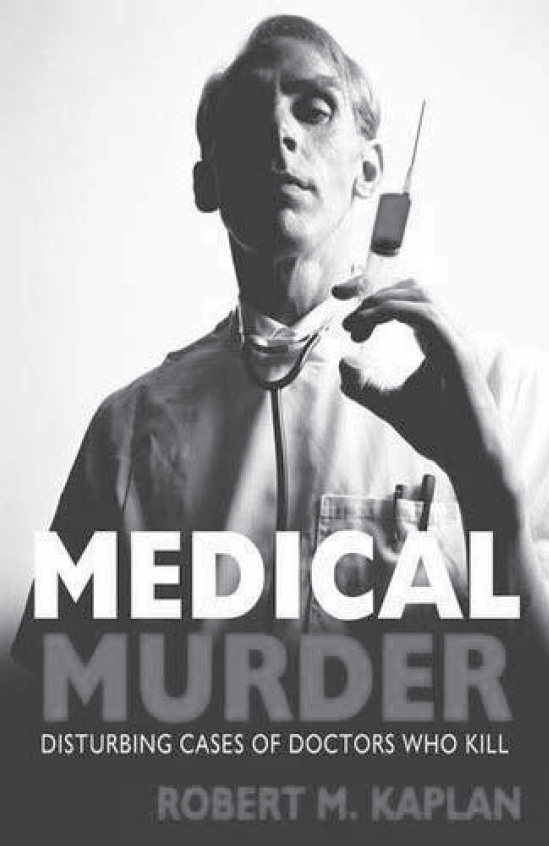
Living as we do in the shadow of Dr Harold Shipman, this very readable history of doctors who kill is something of a relief. William Palmer, a Barts man, was hanged in 1856 for numerous killings, and Thomas Cream, ‘The Lambeth Poisoner’, was hanged in 1892 after a spree of poisoning prostitutes with strychnine. King George V's Physician, Lord Dawson of Penn, apparently gave quite a large dose of morphine to the semi-comatose King, as his life was ‘moving peacefully towards its close’ (as announced in Dawson's medical bulletin). The theme is broadened in chapters entitled ‘Killing with kindness’ (about the problems of euthanasia) and ‘Genocidal doctors’ (e.g. Nazi practitioners) to the tendency of doctors to conform even to dysfunctional social mores, while other health professionals are moving into carer-assisted killing.
Kaplan uses the term ‘clinicide’ to mean ‘the death of numerous patients during treatment by a doctor’. He considers several categories of clinicide including medical serial killing, treatment killing (i.e. intentionality being blurred between the ‘hero’ killer and the ‘mercy’ killer) and mass murderers, doctors being accomplices or even leaders (e.g. Radovan Karadzic). He outlines a number of theories as to why doctors do this, most of them psychoanalytic and with limited evidence base, for example ‘unleashed psychopathic drives’ or ‘the Wounded Healer’, and postulates ‘the Orestes syndrome’ as the basis for Shipman's murders (he was intensely attached to his mother). The fact that today's larger medical schools enable students to go through ‘without being medically known’, the nature of medicine as another commodity, and the inadequacy of ‘a burgeoning host of regulators’ lead Kaplan to conclude that ‘clinicide will continue’.
The real strengths of this book are its easy-to-read, non-technical style, its good references (although there is no index), and the tales of peregrinating mayhem caused by a range of doctors (Kaplan largely sticks to the Anglo-Saxon literature), which are entertaining and well paced. Kaplan also tries to put this process in terms of the history of the development of medical practice over the past 200 years in particular, although his notion that ‘until 150 years ago doctors did little more than talk and hold the pulse’ is rather condescending to the extraordinary work of Ambrose Paré, William Harvey and William Withering, to name just a few. If there is one clue that emerges from all these strange tales it is that bad doctors are already being bad, difficult and antisocial in medical school. And they go on being bad by moving around, across specialties, countries and continents, using brazen charm and the power of medicine to stay afloat.
And what about audit? Just 6 months before Shipman's arrest he was reported as a ‘single-handed enthusiastic GP with a rolling programme of audit – keep up the good work!’



eLetters
No eLetters have been published for this article.